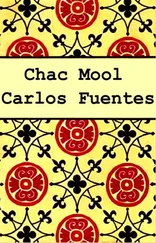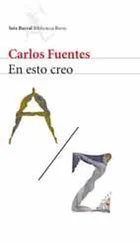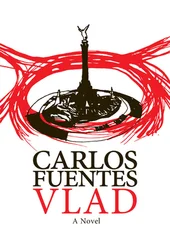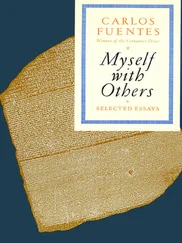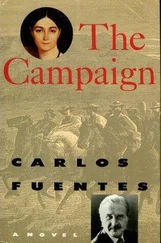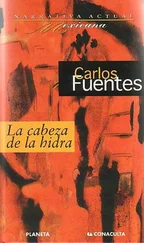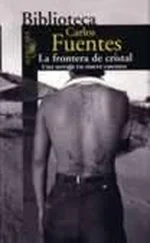“I’m calling you to arrange a meeting,” I say to him over his rare Palm Pre. “We need to talk, you and I.”
“You and I and she,” he clarifies.
“And she,” I agree, though I have no patience for any mysteries other than my own. “Where?”
“The Chapultepec Park Zoo.”
I haven’t been to the zoo since I was a kid, even though I drive past it every day on my commute from the house in Virreyes to the office on Reforma Avenue, passing far enough away that those deep and concentrated animal smells don’t reach me the way they do now when I walk into the jungle vegetation.
I had forgotten the pungent smell of the metropolitan zoo. This mother of all smells comes from the combination of all the animals that live there side by side but separated from each other and from the public by gates, bars, and pits, insurmountable borders. I am well aware that there are animals that attack other animals by instinct as well as by necessity. With notable exceptions, the big ones eat the smaller ones. And the big ones — gorillas, bears, lions, tigers — coexist. But they would attack us, not because we are small, but because we are different, we are bipeds, allegedly rational, and able in any case to talk. If they could see us.
Because, more than anything, we are onlookers. We come to the zoo, and we stare at them. We toss some of them peanuts. We make faces at others. We imitate their roars. We joyfully scratch ourselves: seeing monkey/doing monkey. We flap our arms as if they were the wings of a bird, and we realize that we alone stare at the birds and the beasts. They don’t look at each other. They never look at us. We are of no great concern to them. And we are their jailers. The tiger moves nimbly. He makes the air tremble. He paces his cell as though no one alive could block his way.
The two of them wait for me in front of the tigers’ big cage.
I recognize Abelardo.
But not the woman who accompanies him.
She stands with her back to me, absorbed in contemplating the tiger. Abelardo extends his hand to me. Even when the woman turns around to look at me, I can’t see her. A thick veil conceals her face. The impenetrable veil reveals nothing. Her voice has to penetrate a curtain to tell me her name and, in the provincial manner, assure me of her gracefulness.
“Sagrario Guadalupe, at your service.”
Sagrario Guadalupe or Guadalupe Sagrario? What is the reason for the widespread custom of giving the last name first and the first name last, mimicking the alphabetical order of the phone book?
Sagrario Guadalupe. Guadalupe Sagrario.
She is dressed in black. Not just the veil. She’s wearing a monk’s, or I suppose a nun’s, well, actually a monk’s robe, black stockings, and black flats. Her gloveless hands alone give her away. They are the hands of an old woman. Bony hands, protruding blue veins, arthritic fingers that take my hand for just a second, as though she fears that with a touch everything about her would be revealed.
We gaze at the animals. There are more than three thousand of them in the Chapultepec Zoo. A city unto itself.
LAST EDITION NEWS BULLETIN
The public debate over the comet continues. The scientist Vizarrón provides us with facts about the history of the phenomenon going back in the West to the Stagirite Aristotle, whose Meteorology is the earliest writing on comets we know of, and who refers to them as “flaming expectations.”
We don’t know whether Aristotle meant not expectation but hope , Father Güemes claims, interrupting the scientist and insisting on giving a spiritual connotation to a physical occurrence. The repeated appearances of the comet are signs of a God angry over some frustrations of His divine plan.
“What does the divine plan have to do with anything,” the man of science responds. “A comet is nothing more than an ordinary and physical manifestation of Newton’s law of universal gravity.”
“How often does a comet appear?” asks the man of God.
“Every seventy-five years.”
“The same comet? And isn’t that proof of a celestial plan?”
“You said it,” concludes the man of science, “a celestial plan, not a divine plan.”
“Aren’t they the same?” the priest says in a (successful) attempt to have the last word.
Texas state troopers are detaining and robbing migrant workers returning to Mexico with their hard-earned dollars as well as those on their way to deposit their money in bank accounts. Police officers detain the migrants and accuse them of working illegally. If a worker asks to be taken to the police station to prove that a) he has a work permit, or that b) he is returning to Mexico and has no intention of coming back, or c) to tell them to complain to his boss and leave him alone, in all cases, d) the police ignore his excuses, they pretend not to understand or not to speak Spanish, and as a last resort, offer f) “Choose: your money or prison.”
“I am not illegal.”
“You sure don’t look legal.”
“All my papers are in order.”
“Your looks are a dead giveaway. Pay up or you’ll regret it!”
The authorities in the state of Guerrero reported the detention of Austrian tourist Leonardo Kakabsa, or Cacasa, accused of murdering young Sofía Gálvez, a sex worker in the colonial city of Taxco. Said Leonardo had been detained a week earlier, accused of murdering another sex worker from Taxco by the name of Sofía Derbez, aka the Can. Faced with the facts related to the death of the so-called Can, the judge ruled that to condemn a young and handsome man like Leonardo for killing a prostitute would only give Taxco a bad name and scare off tourism. Set free, the Austrian citizen Kakabsa soon committed the second crime already mentioned. Detained again, he said that once the sex workers in question had rendered their service, they would laugh at him and at his name, making indecent puns. And worst of all, Kakabsa, or Cacasa, said, what motivated his crime was that both prostitutes had called him “The German,” even though Leonardo was Austrian. This time, the local magistrate had no choice but to condemn him, regretting the damage that his decision would cause to the Taxcan tourist industry. “What is more important?” asked the magistrate, “to punish a criminal or to promote tourism, Taxco’s main source of income?” The answer came from Leonardo or Leonard Kakabsa, or Cacasa, himself, when he said that killing prostitutes had been a habit of his since he was a teenager, impelled by an irrepressible feeling of disgust and a sense of justice. “I have killed and will keep on killing,” said the unclassifiable individual when he was handed over to the authorities of his country in keeping with the extradition treaties between Mexico and Austria.
RELATED ARTICLE
When he arrived in Vienna, the said Kakabsa, or Cacasa, asked to be taken to the crypt of the Capuchin Church to kneel before the tomb of Maximilian, the nineteenth-century Habsburg emperor of Mexico, the son of Emperor Franz Karl and the Empress Sophie, descended from a hereditary (and incestuous) line of Spanish and Austrian Habsburgs, Neapolitan Bourbons, and Bavarian Wittelsbachs. Maximilian’s tomb neighbors that of L’Aiglon, the duke of Reichstadt and son of Napoleon with Mary Louise of Austria. When asked about his request, Kakabsa, or Cacasa, explained that his actions in Mexico were simply a form of justice, revenge for the execution by firing squad of Maximilian by the Mexican savages. Viennese authorities, upon examining the individual’s file, reopened two cold cases, both crimes against sex workers named Sophie. Investigations reveal that Leonardo’s mother was also named Sophie. Leonardo, or Leonard, is now under the observation of the renowned psychiatrists (despite the fact that the public calls them Wichtigmacher and Besserwisser , the Important One and the Know It All) of Wahringerstrasse prison.
Читать дальше

